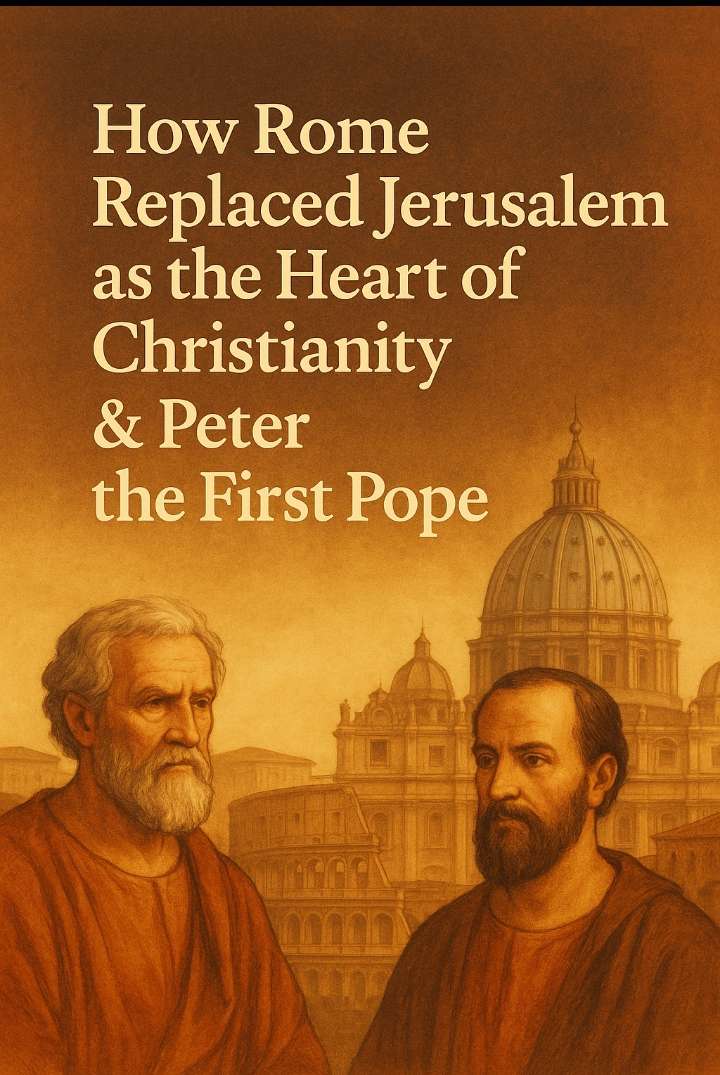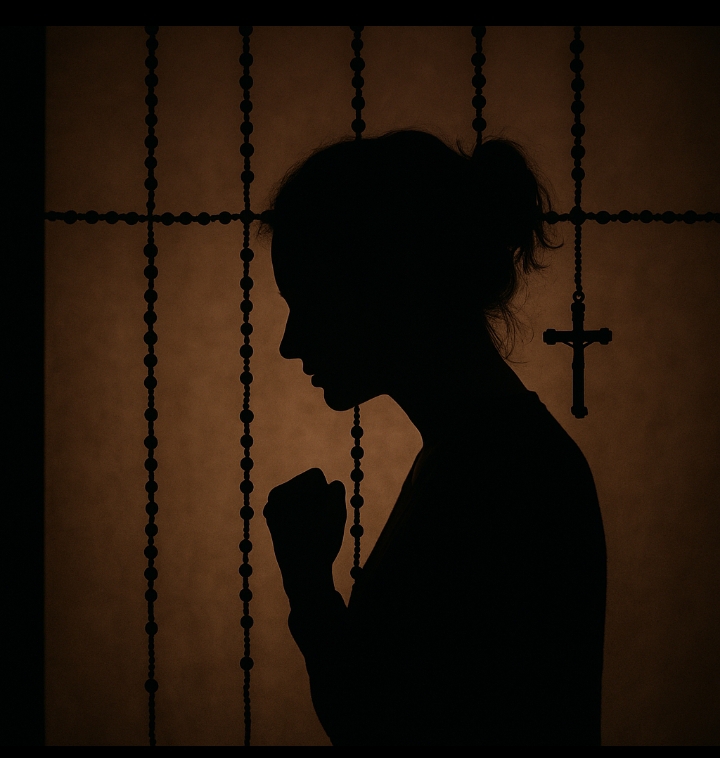How Rome Replaced Jerusalem As The Heart Of Christianity & Peter the First Pope

From Holy City to Eternal City: How Rome Replaced Jerusalem as the Heart of Christianity
When most people think of where Christianity began, Jerusalem comes to mind—the sacred city where Jesus was crucified, resurrected, and where the early disciples first gathered. Yet, the spiritual headquarters of the largest Christian denomination today—the Catholic Church—is not Jerusalem, but Rome.
Even more intriguing is the fact that Apostles Peter and Paul, who never identified as Catholics, are now honored as the first bishops of the Roman Catholic Church.How did this monumental shift happen? And why are Peter and Paul so central to an institution that wasn’t even established during their lifetimes?Let’s take a journey through history to understand this fascinating evolution.
Jerusalem: The Cradle of Christianity
Christianity was born in Jerusalem. It was the city where the Holy Spirit descended on the apostles during Pentecost, where early Christians gathered to worship, and where the Church first faced both growth and persecution. For a time, Jerusalem served as the undisputed center of the Christian world.However, in AD 70, everything changed. The Roman army, under the command of Titus, destroyed Jerusalem and the Second Temple. This event scattered the Jewish population and displaced the early Christian community, weakening the city’s central role in the movement.
Peter’s Journey to Rome: By Choice or By Force?
Tradition holds that Peter eventually made his way to Rome, where he led the Christian community and was ultimately martyred. But how did he get there—and why?While some accounts suggest that Peter chose to go to Rome for ecclesiastical reasons—possibly to guide the growing Christian population in the empire’s capital—there are also strong indications that he may have been taken to Rome under duress.
As the early Church clashed with both Jewish authorities and Roman powers, Peter’s bold proclamation of Jesus as the risen Messiah made him a target. It is believed by some scholars that Peter may have been arrested in Jerusalem or another city, and transferred to Rome as a prisoner, to face execution under Emperor Nero’s crackdown on Christians.Whether by divine mission or political persecution, Peter’s presence in Rome became pivotal. His martyrdom—by crucifixion, according to tradition, upside down at his own request—sealed his spiritual authority in the eyes of later Christians.
Rome: The Unexpected Spiritual Capital
As Christianity spread across the Roman Empire, Rome began to emerge as a key hub. It was the empire’s political and cultural epicenter, and its significance made it a strategic location for the Church’s expansion. The martyrdoms of Peter and Paul in Rome gave the city apostolic authority that no other location could claim.Peter, according to tradition, led the Christian community in Rome and became its first bishop. Paul, the tireless missionary to the Gentiles, also met his end in the Eternal City. Their combined legacy turned Rome into a sacred city for the growing Christian faith.
Was Peter Really the First Catholic Pope?
Peter never referred to himself as a Catholic, nor did he operate within a structure called the Roman Catholic Church. The term “Catholic” (meaning “universal”) wasn’t formally used until decades after Peter’s death, first appearing in the writings of Ignatius of Antioch around AD 110.However, Peter’s leadership in Rome laid the foundation for what would later become the papacy. As the Church became more organized—especially after Emperor Constantine legalized Christianity in the 4th century—the bishop of Rome gained prominence. Over time, this role evolved into the Pope, and Peter was retrospectively honored as the first in that lineage.
Paul’s Role in the Legacy
Though Paul isn’t considered a pope, his influence in shaping Christian theology and spreading the faith cannot be overstated. His martyrdom in Rome, alongside Peter’s, elevated the city’s spiritual status. Together, they are often seen as the twin pillars of the Roman Church.
Why the Shift Matters
Rome’s rise wasn’t just about spiritual authority—it was also about survival and expansion. After the destruction of Jerusalem, the Church needed a new base of operations. Rome, with its global reach, infrastructure, and growing Christian population, became the ideal choice. The eventual institutionalization of the Church gave it the tools to endure, thrive, and spread the Gospel far beyond the borders of the Roman Empire
The church has its root in Jerusalem, but it was Rome that became its global voice. The lives—and deaths—of Peter and Paul in the Eternal City gave Rome its spiritual weight. Though they never wore papal robes or used the term “Catholic,” their leadership and sacrifice became the bedrock upon which the Roman Catholic Church was built.Understanding this history not only explains how Christianity expanded but also why Rome remains a symbol of global faith to this day..




